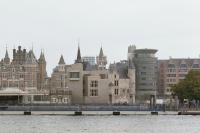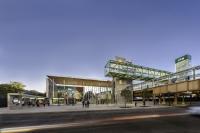Public Parklet
Stockholm, Suède
Tengbom transformed a parking space on Katarinavägen in Stockholm into a neighbourhood node, public meeting place and surface water management during June 2015. The project is an example of green retrofits - strategies for refurbishing grey infrastructure into green infrastructure, and examining what this transformation means for public space. The conversion of parking spaces to community nodes with ecosystem services may be closer than we think.
A parklet is a temporary or permanent sidewalk extension that provides more space and amenities for people using the street. Parklets are usually installed on parking lanes and use one or more parking spaces. Launched in San Francisco, California, in 2010, the phenomenon has now spread all over the world. Following San Francisco's lead, several cities have produced parklet manuals that streamline the application and permissions process.
Both passers-by and workers from surrounding buildings heavily used the parklet on Katarinavägen. Climate-smart micro parks combine sustainable storm water management, the creation of public space, and high biodiversity. Even small pilot projects can reduce flooding, act as impromptu meeting places along our streets, and add ecosystem services to our cities. Green retrofits increase social-ecological resilience, and cities stand to gain financially as a result.
There are several reasons why our street environments may soon change. Attitudes and habits related to car use are shifting, as seen in the increase of bike and car share systems, and car-to-go services. Meanwhile, technical developments towards smaller, self-driving cars are progressing fast. Fewer and smaller vehicles will shrink transport requirements for our cities, which will in turn reduce the need for parking spaces. Following such a significant shift, our streets can potentially become vibrant outdoor rooms with ecosystem services rather than utilitarian parking lots.














